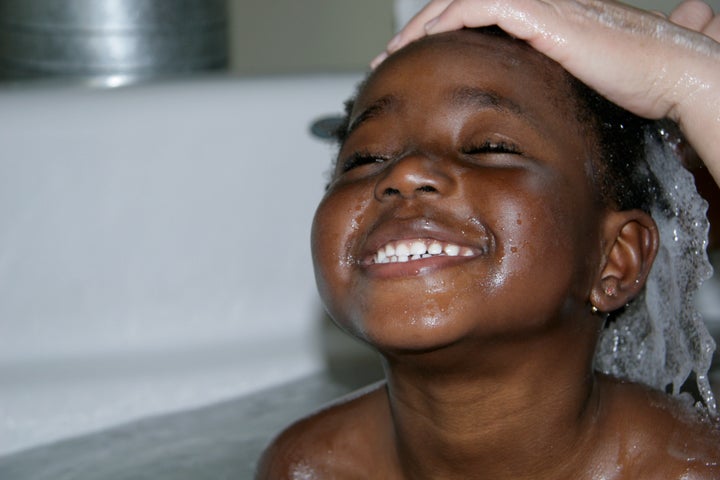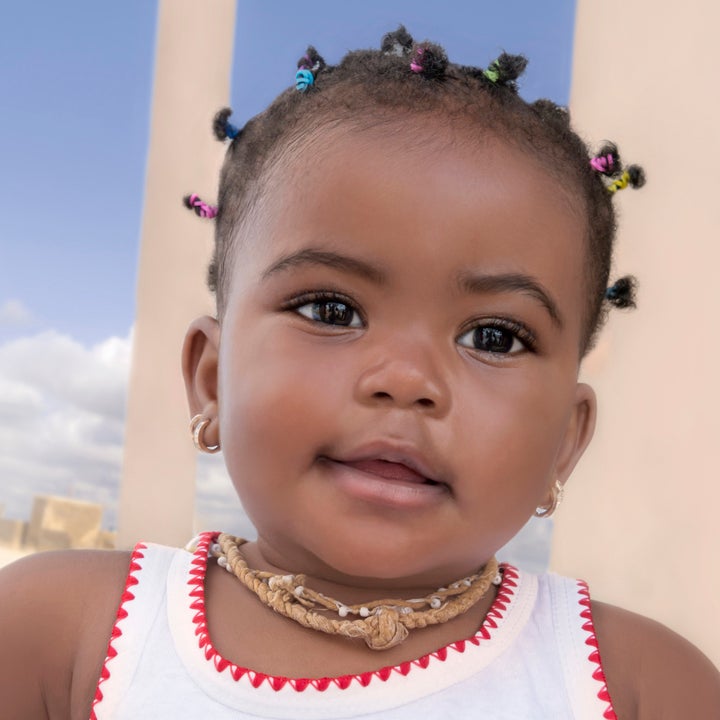
“I have many skills. Apparently, hairstyling is not one of them,” Akwatu Khenti told HuffPost Canada, after trying to cut and style his 6- and 8-year-old sons’ kinky coily hair by himself for the first time, in recent weeks.
For 30 years, generations of the Khenti family have been going to Conrad’s Barbershop in Scarborough, Ont. With the pandemic closures now in their ninth week, and the boys no longer looking so sharp, Khenti decided to take things into his own hands. Between struggling to keep them sitting still while he washed their hair, trying to determine which products and tools to use, and attempting to pull off styles his sons requested, Khenti quickly realized he was in over his head.
“It didn’t turn out the way I wanted at all,” confessed 8-year-old Akil, who was in tears after his father’s butchered mohawk cut attempt.
The struggle is real for most parents during this pandemic. Between transitioning to online school and working from home, they are feeling the stress. And with the closure of salons and barbershops, many Black parents have been facing yet another challenge: the specialized care of their child’s hair.
Allison Hill, founder of Toronto hair salon Hill Studio prides herself on helping Black clients to understand and care for their own and their little ones’ hair. “Your child’s hair doesn’t have to be an uphill battle,” she said.
“Things like coconut oil, olive oil, avocado oil and honey are excellent for retaining moisture and promoting healthy hair.”
Here are Hill’s top tips for maintaining your child’s hair at home:
1. Figure out your child’s hair type.
Your child’s hair type determines what tools, styles and products will work best for your kid. There’s a fun, interactive quiz on the website MyAfroBaby.com that you can do to determine your child’s hair type, curl pattern and texture. And once you have your answers, you can access customized grooming tips. Keep in mind that your child can have more than one curl type. You’ll want to reflect on how the hair absorbs moisture and the condition of the scalp too. “You have to know what you’re working with before you do anything. I call this the discovery process,” says Hill.

2. Take the pain out of wash day.
“Many of us roll our eyes at the thought of wash day. Yes, it takes time and patience but it doesn’t have to be a big mundane mountain to climb.” said Hill, who recommends a bi-weekly wash for natural hair. “Make it fun. Pick a movie and make it a bonding activity. Try to make the most of this time, and improve the experience for both you and your kids by following these pro tips:
Detangle: Working in sections with a co-wash (conditioner-only wash) on damp hair or using a pre-shampoo treatment (coating the hair with oil) if the hair is super dry (say, after taking braids out), this makes detangling less tedious.
Make it less tear-y. Shampoo in the eyes is a big pain point for children. Mixing shampoo and water in a spray bottle will both help prevent shampoo getting in the eyes and help maintain braided hair styles like box braids.
Remember to focus on your kid’s scalp. “The scalp is the foundation or the soil of healthy hair,” said Hill. “A dry, itchy scalp with product build-up is not conducive to having healthy hair.” A shampoo brush is an affordable (as low-cost as $2), must-have in your hair tool kit. It slips on your finger, comfortably fitting in your hand to clean the scalp and easily detangle hair. The soothing scalp massage has the bonus of helping children relax and enjoy the grooming process.
3. Raid your pantry.
Conveniently, at this time when Black hair care products are harder to access for many Canadians, with specialist stores and salons closed, some of the best hair care products can be found right in your pantry. Hill said:
“Ignore the craze of ‘I need new products.’ Look at what you have. You only need to use two or three products ― products you probably have in your kitchen. Things like coconut oil, olive oil, avocado oil and honey are excellent for retaining moisture and promoting healthy hair. Shea butter and essential oils are also a great go-to.”
Follow these links to learn how to make your own shampoo, curling defining cream and gel, conditioner and treatments.
4. Buy products with ingredients you can pronounce.
A general rule when buying any products: “If you can’t pronounce the first few ingredients listed, it’s probably not good for your hair,” said Hill. She also warns to stay away from products with petroleum jelly and mineral oil, which clog pores in the scalp. “You want moisture and protein in your product,” she said.
Look for moisturizing ingredients like aloe vera, glycerin, honey and water in store-bought products. Protein-rich ingredients like amino acids, keratin, vegetable and wheat protein, are also recommended.
Some good brands include: Shea Moisture, Carol’s Daughter, TGIN, and Cantu. Canadian brands that have created product lines for Black hair, Up North Naturals and EarthTones Natural use safe ingredients and have online stores, so you can have products shipped to the door. You can also reach out to your stylist to see what products they have in stock to sell and arrange for local shipment.

5. Experiment with styles.
Many parents are undergoing a crash course on this new 100% DIY hair journey. “I think right now, a lot of parents are panicking, naturally. And they’re trying to figure out in a couple of weeks what we, as stylists, have taken years to learn. Be kind to yourself,” said Hill.
Fortunately, the internet is full of easy hair tutorials to follow. Whether you want to try two-strand twists, braiding, box braids or cornrows (if time allows, adding colourful beads).
“Everyone’s trying a thing,” Hill joked. “Just remember, not everything works for everyone. Follow those [demonstrations on people ]who have the same hair type.”
6. Clip with caution
If you’re using clippers on your child, be sure to use guards to control how much hair you’re taking off. If you’re considering a chemical treatment and have never done it before, Hill advised, “This is not the time to learn. It’s best to leave it to the professionals when dealing with harsh chemicals.”
7. Protect hair at bedtime
Sleeping with a satin scarf and bonnet at night will help maintain your child’s style and protect their hair. Natural Hair Kids, has fun and stylish bonnets for children you can order online.
8. Show your kid’s stylist appreciation.
Even while practicing social distancing, parents can still stay in touch with their family’s cherished stylists and barbers. “You’d be surprised how a simple text or email letting them know you’re thinking of them can go a long way at a time like this. I miss my clients.” said Hill.
You can continue to support your stylist’s business by leaving a positive review on their website, Google or Yelp to boost their ratings; liking and sharing their content to boost their online visibility; and buying gift cards, donating to their relief fund, or simply sending them an appreciation tip. As much as you’re struggling with hair, your stylist is likely struggling with things like paying the rent and bills for a business that’s temporarily closed.
9. Remember, you are not alone.
Hair salons and barbers have always been a sacred place for the Black community, where important conversations happen and a vital support system is forged. Many parents are feeling the void that runs deeper than missing out on a simple wash and style.
While Hill’s physical salon space is closed, she continues to bring the Black community together, through her online social platform, facilitating weekly forums with other stylists in which they discuss hair, self-care and mental wellness ― all important topics for Black parents during this pandemic.
“Being connected is what will get us through this difficult time,” Hill said.